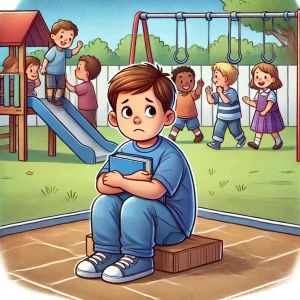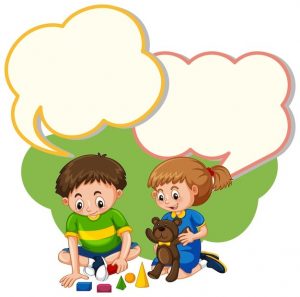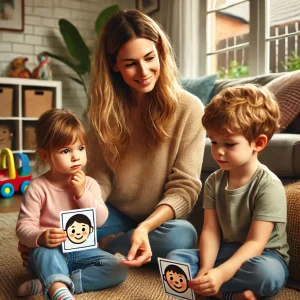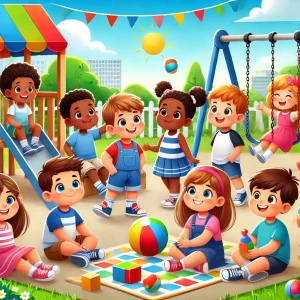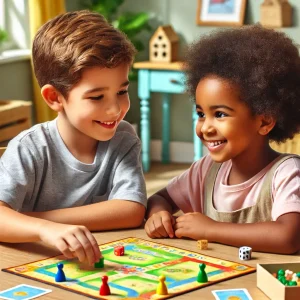6 Tips for Writing Social Stories for Kids with Autism and ADHD
By Wellness Hub
Last Updated: January 9, 2025
Social stories are transformative tools for children with Autism and ADHD, helping them navigate social cues and expected behaviors through relatable, structured narratives. These stories break down complex interactions into manageable pieces, enhancing communication and reducing anxiety. By consistently integrating these tailored tales into daily routines, we empower children to handle social situations more confidently and effectively. Let’s explore key strategies to craft social stories that resonate with and truly benefit these amazing young minds.
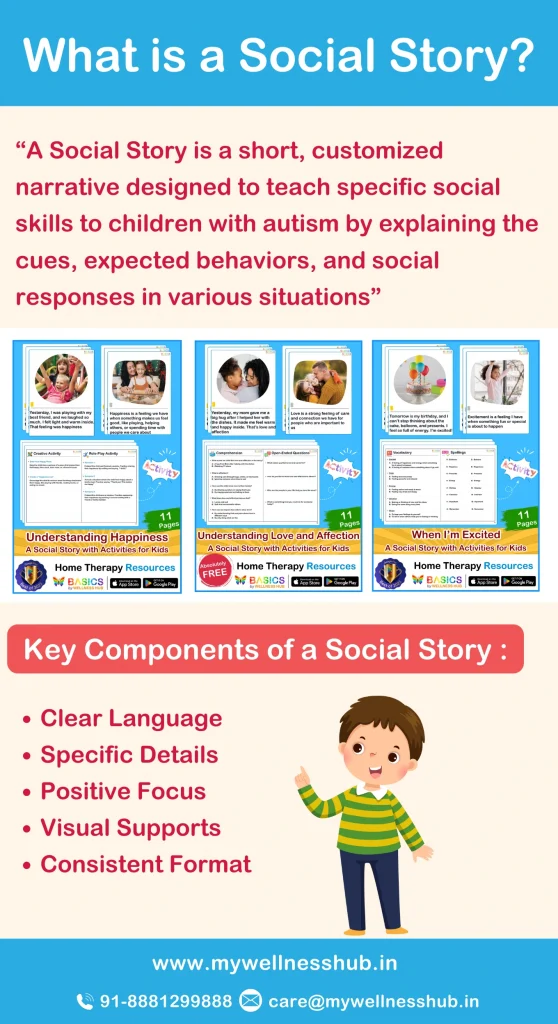
Understanding Social Stories
What Are Social Stories?
Social stories are short, customized narratives that help children with Autism and ADHD understand social norms and expected behaviors by depicting specific scenarios. These stories simplify complex social cues into easy-to-follow steps, often including pictures to aid understanding. By directly addressing what to expect and how to act, social stories make daily interactions more predictable and less stressful for children.
Why Use Social Stories for Autism and ADHD?
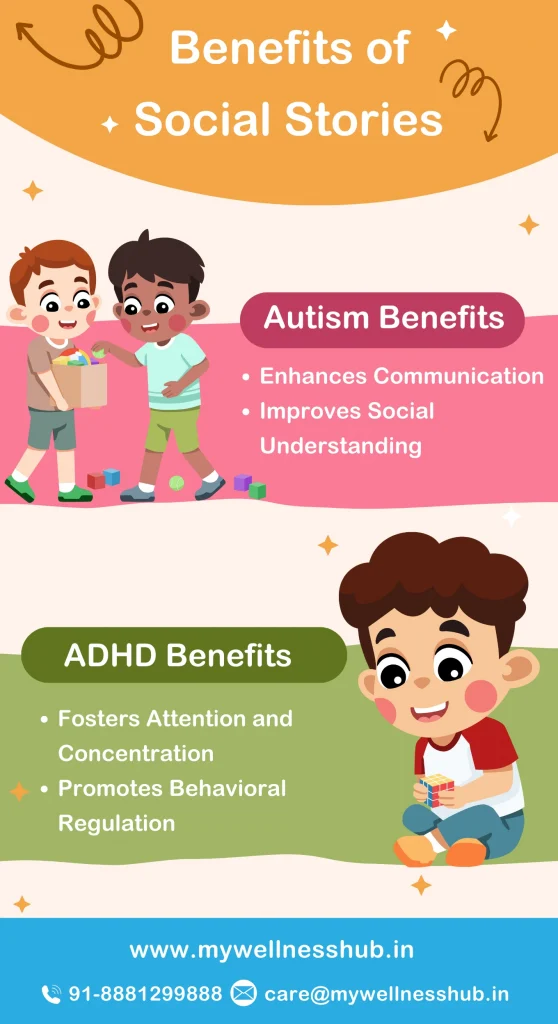
Social stories are particularly useful for children with autism and ADHD because they:
- Clarify Expectations: They break down social interactions into clear, manageable parts.
- Reduce Anxiety: Knowing what to expect in various social settings can make these situations less daunting.
- Improve Behavior: These stories provide a model of good behavior that children can emulate in real life.
- Boost Confidence: As children become familiar with the scenarios in the stories, they feel more confident navigating similar situations on their own.
Tip 1: Keep It Simple and Visual
Importance of Visual Aids
- Clarify Messages: Use visuals to make abstract concepts more concrete and understandable.
- Enhance Understanding: Combine text with relevant images to guide children through the story.
- Attention Capture: Visuals grab attention and help retain important information.
Examples of Simple Language and Images
- Language Simplicity: Use clear, straightforward language like, “I wait, then it’s my turn.”
- Supportive Imagery: Pair texts with images such as pictures of children playing a game and taking turns.
Tip 2: Focus on the Positive
Highlighting Desired Behaviors
- Model Positive Outcomes: Focus stories on desired behaviors and their benefits, like the joy of sharing and playing together.
Positive Reinforcement in Stories
- Narrative Praise: Include phrases like “Great job waiting for your turn!” to reinforce positive actions and outcomes.
Tip 3: Customize the Story to the Child
Tailoring Content to Individual Needs
- Personalize Stories: Adapt stories to include the child’s interests, such as favorite activities or characters, to enhance engagement.
- Make It Relevant: If a child loves space, set a story about taking turns inside a spaceship.
Involving the Child in the Story Creation
- Child Participation: Allow children to choose characters, settings, and behaviors to focus on in their social stories.
- Ownership and Motivation: Involvement in story creation boosts relevance, ownership, and enthusiasm for learning.
Engagement and Educational Value
- By implementing these tips, social stories become more than just teaching tools—they become engaging stories that children with Autism and ADHD can relate to and learn from effectively.
Tip 4: Consistency Is Key
Regular Reading Schedule
- Set a Routine: Integrate social stories into daily activities to create a comforting routine for children.
- Daily Sessions: For example, read stories about classroom behavior each morning before school to set expectations.
Consistent Language and Structure
- Uniform Format: Use the same language and structure in all stories to aid comprehension.
- Predictable Patterns: Start stories with consistent phrases like “When I am at [place], I can [behavior]” to help children grasp the narrative flow.
Tip 5: Engage with Interactive Elements
Interactive Components in Social Stories
- Incorporate Questions: Add questions that ask children what they think will happen next or how a character might react.
- Choices Matter: Provide decision points where children choose what a character does, enhancing engagement and learning.
Tip 6: Review and Revise
Assessing the Impact of the Social Story
- Observation: Monitor the child during applicable situations to evaluate changes in behavior or understanding.
- Effectiveness Check: Determine if the social story is achieving its goals and how the child relates to the content.
Making Necessary Adjustments Based on Feedback
- Gather Feedback: Collect insights from the child and caregivers on the story’s impact.
- Modify Content: Adjust the narrative, language, or visuals based on feedback to enhance relevance and effectiveness.
Incorporating Social Stories into Daily Routines
Practical Ways to Integrate Social Stories
- Schedule Reading Times: Embed story reading into daily routines at fixed times, like during morning preparations or bedtime.
- Prepare for Events: Use social stories before specific events (e.g., doctor visits, social gatherings) to prepare the child.
- Consistent Reinforcement: Revisit the same stories regularly to reinforce the lessons and ensure familiarity.
Conclusion
Social stories are powerful tools that help children with Autism and ADHD understand and navigate the world around them. By using simple visuals, focusing on positive outcomes, and tailoring stories to individual needs, you can significantly improve their communication and behavior. We encourage you to start creating customized social stories and see the difference they make. Visit Wellness Hub for more tips and resources to guide you through this rewarding process. Embrace the journey of crafting stories that open new worlds of interaction and learning for your child!
Frequently Asked Questions:
1. What are social stories?
Social stories are tailored short narratives designed to teach children with Autism and ADHD about social norms and expected behaviors. They use specific, relatable scenarios to explain the steps involved in various social interactions, helping children understand and apply these lessons in real-life situations.
2. How do social stories help children with autism?
Social stories aid children with autism by simplifying complex social interactions into manageable parts. They provide clear examples of how to behave and respond in different settings, which can help children learn appropriate social behaviors and reduce feelings of overwhelm.
3. Can social stories reduce anxiety in children with ADHD?
Yes, by providing predictable narratives about social interactions and outcomes, social stories can help make the world more understandable for children with ADHD, reducing anxiety associated with uncertainty and helping them engage more confidently in social situations.
4. What should be included in a social story for a child with autism?
A social story should have simple, direct language, focus on positive behaviors, and include visual aids like pictures or icons to illustrate points. The story should be customized to the child’s level of understanding and interest to capture their attention effectively.
5. How often should I read social stories to my child?
Consistency is key in reinforcing the lessons from social stories. Ideally, read them to your child daily, particularly before anticipated events or activities that the story addresses, to help cement the behaviors and responses you’re teaching.
6. What is the best way to create a social story for ADHD?
When creating a social story for a child with ADHD, keep the story concise and focused on positive reinforcements. Incorporate interactive elements such as questions that invite the child to think about what might happen next or choices on how a character could react in the story.
7. How can I tell if a social story is effective for my child?
Monitor your child’s behavior in scenarios that the social story covers to see if they are applying the lessons learned. Improvement in handling these situations or feedback from teachers and therapists can also provide insights into the story’s effectiveness.
8. Where can I find resources to create social stories?
You can find a variety of resources to help you create effective social stories at Wellness Hub’s resource page. This includes step-by-step guides, templates, and tips that can assist you in crafting stories that are both engaging and educational for your child.
9. Can I use technology to make social stories more engaging?
Absolutely! Technology can enhance social stories by adding interactive features such as clickable areas, animations, or sounds. Digital platforms like tablets and smartphones can be used to deliver these stories in a more dynamic and engaging way, which can be particularly appealing to children.
10. Are there examples of successful social stories for children with autism and ADHD?
Many success stories illustrate the effectiveness of social stories in improving social skills and behavior in children with autism and ADHD. These examples can be found on educational websites, therapy centers, and resources like those provided by Wellness Hub, offering insights into how different approaches and story elements can lead to positive outcomes.
About the Author:
Shravanaveena Gajula
M.Sc ., Speech and Language Pathology (5+ years of experience)
Shravanaveena Gajula is a dedicated Audiologist and Speech-Language Pathologist with a BASLP and an M.Sc in Speech and Language Pathology. With experience spanning multiple settings, including Wellness Hub and Ashray Akruti, Veena specializes in a wide range of disorders from developmental issues in children to speech and language assessments in adults. Her expertise includes parent counseling, managing speech sound and fluency disorders, and creating individualized therapy programs. Veena is also PROMPT certified and an author of several insightful blogs on speech and language pathology, aiming to educate and assist caregivers in supporting their loved ones.
Book your Free Consultation Today
Parent/Caregiver Info:
Client’s Details:
* Error Message
